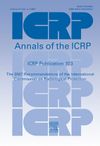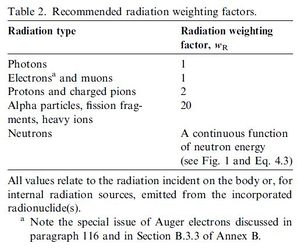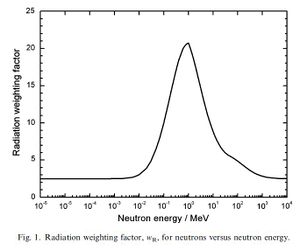Difference between revisions of "Absorbed, Equivalent, and Effective Dose"
Jump to navigation
Jump to search
| (One intermediate revision by one other user not shown) | |||
| Line 1: | Line 1: | ||
__NOTOC__ | __NOTOC__ | ||
| − | |||
<span style= "font-size:115%;" style="line-height: 1.1em;"> '''Radiation dose is a measure of the amount of exposure to radiation. There are three kinds of dose in radiological protection. ''Absorbed dose'' is a measureable, physical quantity, while ''equivalent dose'' and ''effective dose'' are specifically for radiological protection purposes.''' </span> | <span style= "font-size:115%;" style="line-height: 1.1em;"> '''Radiation dose is a measure of the amount of exposure to radiation. There are three kinds of dose in radiological protection. ''Absorbed dose'' is a measureable, physical quantity, while ''equivalent dose'' and ''effective dose'' are specifically for radiological protection purposes.''' </span> | ||
| Line 50: | Line 49: | ||
''' </span> | ''' </span> | ||
|- | |- | ||
| − | |<span style="font-size=100%"> Effective dose is calculated for the whole body | + | |<span style="font-size=100%"> Effective dose is calculated for the whole body. |
</span> | </span> | ||
Latest revision as of 21:54, 21 November 2019
Radiation dose is a measure of the amount of exposure to radiation. There are three kinds of dose in radiological protection. Absorbed dose is a measureable, physical quantity, while equivalent dose and effective dose are specifically for radiological protection purposes.
Effective dose in particular is a central feature of radiological protection. It sums up any number of different exposures into a single number that reflects, in a general way, the overall risk. The concept may be complex, but it makes radiological protection practical to implement.
|
|
|
More Details
[see more/less]
Quotes from ICRP Publications
[see more/less]
![]() Read on to learn about Dose limits
Read on to learn about Dose limits
See Also
-

ICRP Publication 103 The 2007 Recommendations of ICRP




